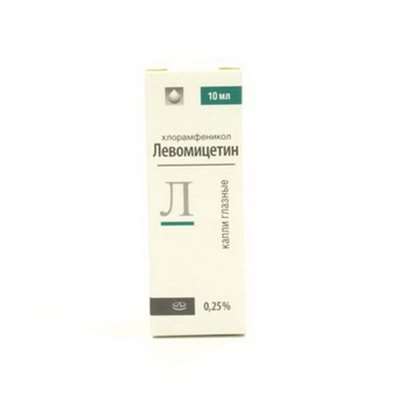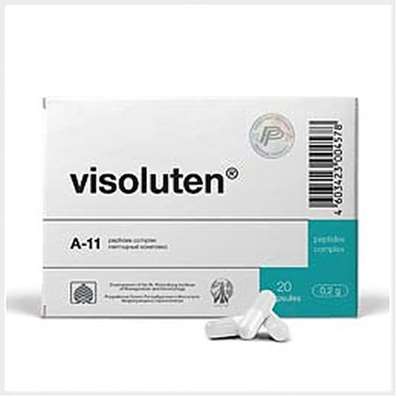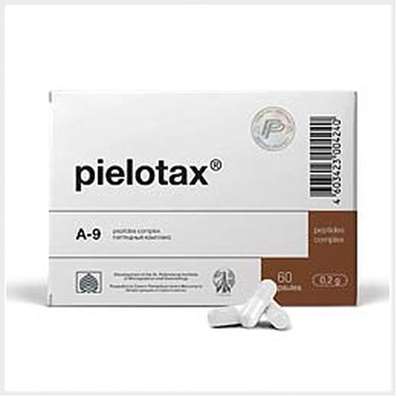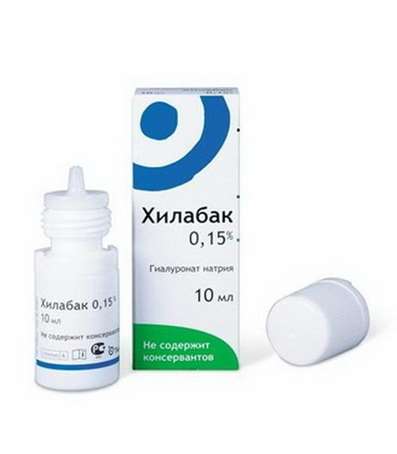Instruction for use: Neosinefrin-POS
I want this, give me price
Trade name of the drug – Neosinefrin-POS
ATX code S01FB01 Phenylephrine
Pharmacotherapeutic group:
Alpha-agonists [alpha agonists]
Alpha-agonists [Ophthalmic agents]
The nosological classification (ICD-10)
H20 Iridocyclitis
recurrent iritis, sympathetic iridocyclitis, Sluggish posterior uveitis, Sluggish posterior uveitis, Posterior uveitis, the posterior segment of the eye Iridocyclitis, Iridocyclitis and other uveitis, Irit, Keratoiridotsiklit, Acute iritis, uveitis, cycle of Acute iridocyclitis, Acute non-infectious uveitis
H21.5 Other adhesions and tear of the iris and ciliary body
Adhesions of the iris in the postoperative period, Adhesions in the postoperative period
H21.9 iris disease and ciliary body, unspecified
Subatrophy iris, Spots Brushfilda
H40.0 Suspected glaucoma
Marked rise in intraocular pressure, Hypertension eyes, ocular hypertension, Measurement of intraocular pressure, ophthalmohypertension, Elevated IOP, Elevated intraocular pressure, Elevated intraocular pressure in infectious diseases of the eye, Povyshennore intraocular pressure, Increased ophthalmotonus, Spontaneous blockade angle opposite eye, Narrow chamber angle, Iatrogenic blockade angle opposite eye
H40.2 Primary angle-closure glaucoma
closure Glaucoma, Glaucoma with a narrow angle of anterior chamber, Angle-closure glaucoma, Acute angle-closure glaucoma, An acute attack of angle-closure glaucoma, Elevated intraocular pressure angle-closure glaucoma, Chronic angle-closure glaucoma
H599 * Diagnosis / eye disease diagnostics
Angioscopy iris, Gonioscopy, Diagnosis in Ophthalmology, Differential diagnosis of the type of injection of the eyeball, A study of the fundus, A study of the fundus and lens, Control of the rear segment of the eye state, mydriasis, Examination of the retina during surgery, Examination of the retina after surgery, Definition of manifest refraction, Determination of refraction, Determination of refraction using skiascopy, Ophthalmic diagnostics, funduscopy, pupil dilation, Creation of mydriasis, Creating cycloplegic, Fluorescein angiography of retinal vessels, electroretinography
Z01.0 eye exam and vision
Angioscopy vasculature of the fundus, Angioscopy iris, Diagnostic scraping of the conjunctiva, US eyes, pupil dilation
Composition
Eye drops 1 ml
active substance:
Phenylephrine Hydrochloride 50 mg
100 mg
Other ingredients: benzalkonium chloride (preservative) - 0.05 / 0.05 mg; disodium edetate - 1/1 mg; Water for injection - up to 1 ml
Description
The solution: transparent, colorless or with a faint yellowish-brown tint.
Pharmacological Properties of Neosinefrin-POSPharmachologic effect
vasoconstrictor, alpha-agonists
pharmacodynamics
Phenylephrine - non-selective α-adrenoagonists has expressed α-Adrenomimeticalkie activity.
When applied topically in ophthalmology causes mydriasis, improves the outflow of intraocular fluid and constricts blood vessels of the conjunctiva.
Phenylephrine has a strong stimulating effect on the postsynaptic alpha-adrenergic receptors, has very little effect on β-adrenergic receptors of the heart. The drug has vasoconstrictor action similar to the action of norepinephrine (noradrenaline), while it has practically no chronotropic and inotropic effect on the heart.
Phenylephrine pressor effect is weaker than that of norepinephrine, but is longer. It causes vasoconstriction after 30-90 seconds after instillation, duration of 2-6 hours. After instillation of phenylephrine reduces muscle that extends the pupil and conjunctiva arteriolar smooth muscle, thereby inducing mydriasis. Mydriasis occurs within 10-60 minutes after a single instillation and maintained for 2 hours. Mydriasis induced by phenylephrine, not accompanied cycloplegic.
Pharmacokinetics
Phenylephrine easily penetrates the ocular tissue, Cmax in the plasma occurs 10-20 min after topical application. Phenylephrine is excreted by the kidneys as unchanged (<20%) or in the form of inactive metabolites.
Indications of Neosinefrin-POS
iridocyclitis (prevention of occurrence of adhesions and rear reduce exudation of the iris);
mydriasis during ophthalmoscopy and other diagnostic procedures necessary to monitor the state of the rear segment of the eye (including postoperative period);
holding provocative test in patients with narrow profile of anterior chamber angle and suspected closure glaucoma;
differential diagnosis of superficial and deep injection of the eyeball.
Contraindications
hypersensitivity to the drug;
narrow-angle or angle-closure glaucoma;
hypertension, coronary artery disease, aortic aneurysm, atrioventricular block I-III degree, arrhythmia;
tachycardia;
type 1 diabetes mellitus history;
chronic administration of MAO inhibitors, tricyclic antidepressants, antihypertensive drugs;
additional mydriasis during surgery in patients with impaired integrity of the eyeball, as well as in violation of tear production;
hyperthyroidism;
hepatic porphyria;
congenital deficiency of glucose-6-phosphate dehydrogenase;
rhinitis;
pregnancy;
lactation;
age under 12 years;
elderly age.
Precautions: Patients with type 2 diabetes due to increased risk of increased blood pressure; due to the fact that phenylephrine causes hypoxia conjunctiva - Patients with sickle cell disease, the wearing of contact lenses after surgery (healing reduction); cerebral arteriosclerosis; long-existing asthma.
Pregnancy and breast-feeding
Use during pregnancy and lactation is contraindicated.
Side effects
local
Conjunctivitis, Keratitis, periorbital edema, eye pain, burning during instillation, tearing, blurred vision, eye irritation, a feeling of discomfort in the eye, increased intraocular pressure, blockage of the angle of the anterior chamber (by narrowing the angle), allergic reactions, reactive hyperemia (after cancellation drug).
Phenylephrine may cause miosis reactive next day after application. Repeated instillation of the drug at this time can give less pronounced mydriasis than the day before.
Due to the significant reduction in the iris dilator muscle under the influence of phenylephrine, 30-45 minutes after instillation of the pigment particles can be detected in the moisture of the anterior chamber of the leaf pigment of the iris. The slurry in the chamber moisture must be differentiated manifestations of anterior uveitis or to exposure to blood cells in the anterior chamber of the moisture.
System
Contact dermatitis.
From the CCC: tachycardia, increased blood pressure, reflex bradycardia, coronary artery occlusion, pulmonary embolism. When using a 10% solution (in elderly patients with diseases CCC) - ventricular fibrillation, of myocardial infarction.
CNS: headache, vomiting, tremors, insomnia, weakness.
Interaction
Mydriatic phenylephrine enhanced effect when used in combination with local application of atropine. Due to the strengthening of vasopressor action may develop tachycardia.
The use of phenylephrine for 21 days after discontinuation of MAO inhibitors to patients and tricyclic antidepressants should be administered with caution, because in this case there is the possibility of uncontrolled blood pressure rise.
Pressor effect of phenylephrine may also be potentiated when combined with tricyclic antidepressants, .beta.-blockers, reserpine, guanethidine, methyldopa and m-holinoblokatorami.
Phenylephrine may potentiate the change in cardiovascular activity inhalation anesthesia by increasing the sensitivity of the myocardium to adrenoceptor agonists and occurrence of ventricular fibrillation.
Use in conjunction with other agonists may increase cardiovascular effects of phenylephrine.
The use of phenylephrine may cause weakening of concomitant antihypertensive therapy and lead to an increase in blood pressure, tachycardia.
Pre-instillation of local anesthetics may increase the systemic absorption and prolong mydriasis.
Dosage and Administration
Kongungualno.
Adults and children over 12 years for mydriasis during diagnostic procedures: 1 drop of 5% solution once, if necessary (for maintaining mydriasis) can be repeated one hour after instillation.
With insufficient pupil dilation, as well as in patients with rigid iris diagnostic mydriasis is possible to use 10% of the solution at the same dose.
To carry out diagnostic procedures:
- As a provocative test in patients with narrow profile of the anterior chamber angle and angle-closure glaucoma suspected buried 1 drop of 5% solution of the drug once. If the difference between the values of intraocular pressure before instillation of the preparation and after pupil dilation is 3 to 5 mm Hg. . Art, the provocative test is considered positive;
- For differential diagnosis of the type of injection eyeball buried 1 drop of 5% or 10% solution of the drug once. If after 5 minutes after instillation marked vasoconstriction of the eyeball, the injection is classified as surface, while maintaining the redness of the eyes should be carefully examine the patient for the presence of iridocyclitis or scleritis, because this indicates expansion more deep lying vessels.
When iridotsiklitah to prevent rupture of the already formed and posterior synechiae exudation and decrease in the anterior chamber of the eye one drop of 5% or 10% of the drug solution is dug into the conjunctival sac of the patient eye 2-3 times a day 5-10 days, depending on the severity of the disease.
In the preparation of patients for surgical interventions to achieve mydriasis: single instillation of 5% or 10% solution for 30-60 minutes before the operation (after opening the eyeball membranes repeated instillation of the drug is not permitted).
Overdose
Symptoms include restlessness, nervousness, dizziness, sweating, vomiting, tachycardia, weak or shallow breathing.
Treatment: the occurrence of systemic effects of phenylephrine to arrest undesirable effects can be achieved by applying α-adrenoceptor blocking agents, for example, introduction of 5 to 10 mg phentolamine in /. If necessary, the injection can be repeated.
special instructions
During treatment is not recommended to use contact lenses.
Effects on ability to drive and use machines. After treatment, due to changes in accommodation and pupil size may decrease visual acuity, it is not recommended to drive and engage in activities that require attention, to restore it.
release Form
Eye drops, 5%, 10%. The PE flakonah- screw a protective cap provided with a safety ring for 10 ml. 1 Dropper bottle in paper cartons.
Storage conditions of Neosinefrin-POS
The temperature is not higher than 25 ° C.
Keep out of the reach of children.
Shelf life of Neosinefrin-POS
2.5 years. After opening the bottle - 4 weeks.
Do not use beyond the expiration date printed on the package.
Available with prescription.

 Cart
Cart





